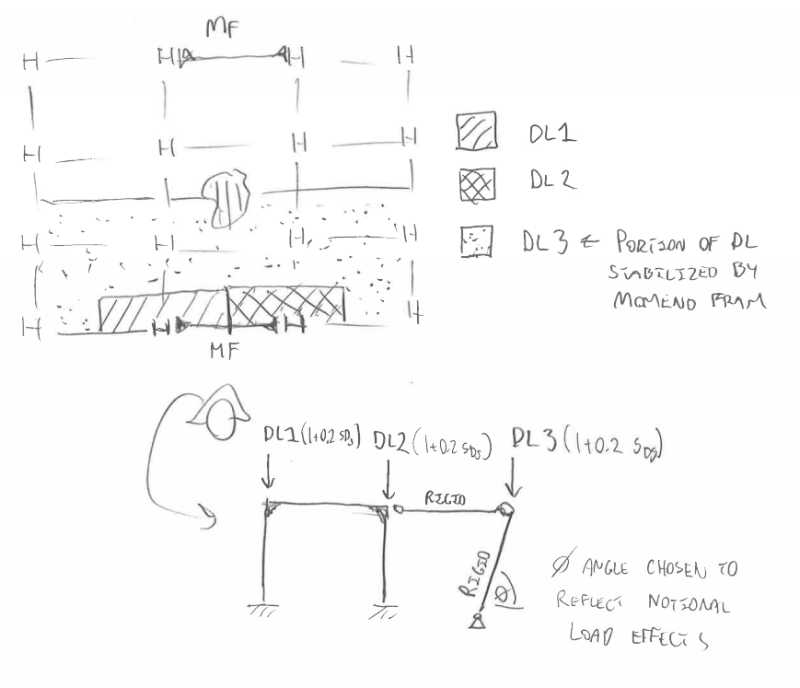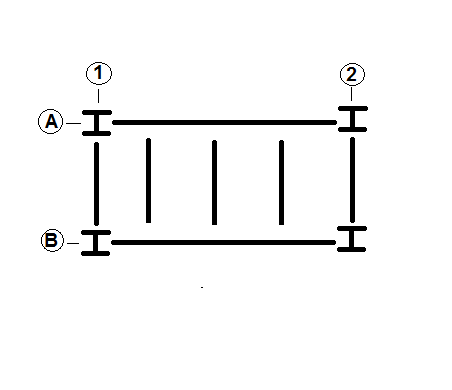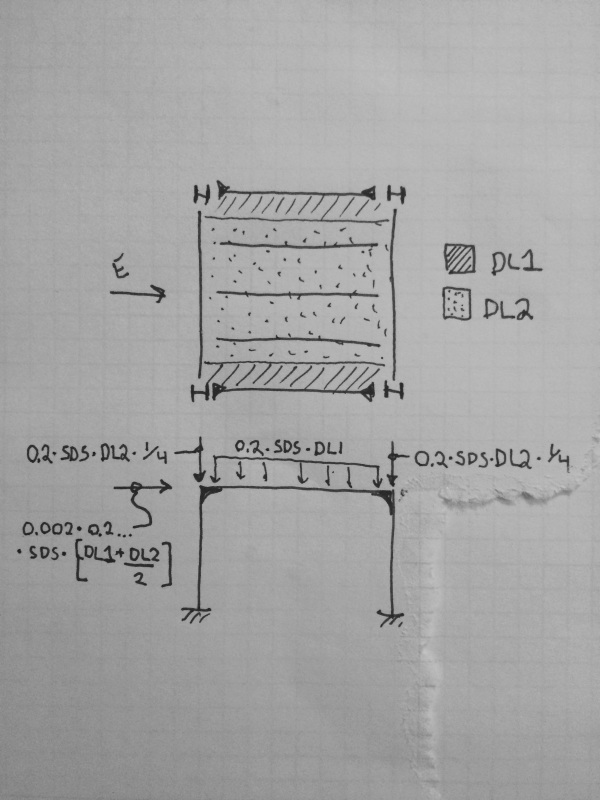azureblue83
Structural
Load Combination 5 and 7:
1.2D+1.0E+L+0.2S
0.9D+1.0E
where D is defined as simply "dead load" and E = earthquake load, calculated as following:
E = E[sub]h[/sub] +- E[sub]v[/sub] = pQ[sub]E[/sub] +- 0.2S[sub]DS[/sub]D
where Q[sub]E[/sub] is the effect of horizontal seismic effect, and 0.2S[sub]DS[/sub]D is the vertical seismic effect.
Now, suppose designing a moment frame that is for lateral load only, i.e. it is not taking any dead/live load except its self weight, but it is taking seismic lateral load due to building's dead load. What "D" should be used for the 0.2S[sub]DS[/sub]D? Do we use the building's D? Or, just the moment frame's self weight D?
1.2D+1.0E+L+0.2S
0.9D+1.0E
where D is defined as simply "dead load" and E = earthquake load, calculated as following:
E = E[sub]h[/sub] +- E[sub]v[/sub] = pQ[sub]E[/sub] +- 0.2S[sub]DS[/sub]D
where Q[sub]E[/sub] is the effect of horizontal seismic effect, and 0.2S[sub]DS[/sub]D is the vertical seismic effect.
Now, suppose designing a moment frame that is for lateral load only, i.e. it is not taking any dead/live load except its self weight, but it is taking seismic lateral load due to building's dead load. What "D" should be used for the 0.2S[sub]DS[/sub]D? Do we use the building's D? Or, just the moment frame's self weight D?



